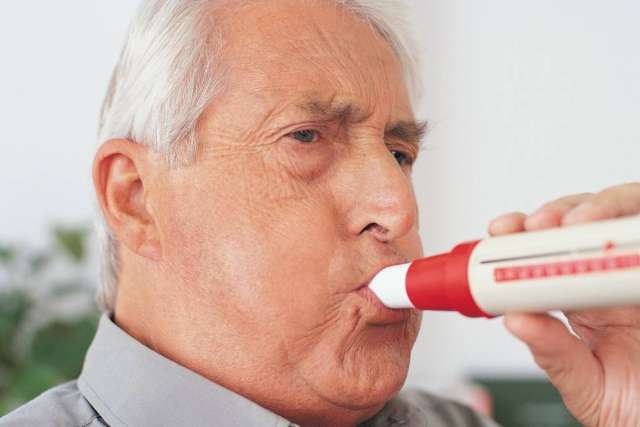Dear Doctors: I wonder if there have been any updates on that breathing technique called IMST? It was being studied because it can lower systolic blood pressure. I’m on blood pressure meds, and when I meet with my cardiologist, I want to talk to him about trying this method.
Dear Reader: You’re referring to a breathing exercise known as inspiratory muscle strength training, which is often shortened to IMST. It’s also sometimes referred to as resistive breath training. The technique is performed using a hand-held device that creates resistance as the user inhales and exhales through the mouthpiece. The result is strength training for the complex muscles that are involved in breathing. These include the diaphragm, which is the dome-shaped sheet of muscle that separates the chest cavity from the abdomen; the external intercostal muscles of the rib cage; and, to a lesser degree, the abdominal muscles.
Unless someone is actively exercising, breathing is a largely passive event. With the resistance created by the devices developed for IMST, it’s possible to tone and strengthen the muscles that are used in breathing while otherwise remaining at rest.
IMST has long been used to aid in recovery after spending time on a ventilator and to help people living with breathing disorders such as COPD and asthma. But, as you mention, research conducted two years ago at the University of Colorado in Boulder linked daily practice of IMST to improved blood pressure. Last spring, the results of a small study published in the Journal of the American Heart Association added to the evidence regarding the benefits of the practice. Researchers divided 36 adults, aged between 50 and 79, each with high blood pressure, into two groups. One group used the IMST breathing device set at high resistance. The other participants, who made up the placebo group, used the same breathing device, but set at very low resistance. None of the people in the study knew which group they had been assigned to.
The participants were asked to do 30 breaths per day, six days a week. After six weeks of the five-minute practice, systolic blood pressure (that’s the top number) in the high-resistance group dropped 9 points. It’s an improvement that continued another six weeks, even without IMST practice. The group also saw a rise in biomarkers that are associated with improved arterial health and a drop in inflammation associated with heart disease. Similar changes were not seen in the low-resistance control group.

Although the reasons for the improvements to blood pressure and vascular health are not yet clear, researchers said they suspect the practice of IMST prompts the body to increase production of an important molecule known as nitric oxide. It’s a vasodilator, which means that nitric oxide helps the blood vessels in the body to widen and relax. This lowers blood pressure and increases circulation.
We’re glad that you’ll be speaking with your cardiologist before moving forward with IMST. Although the practice has proven safe for a wide range of participants, it’s still important that anyone considering it should consult with their health care provider before beginning.
The experts in the Division of Pulmonary, Critical Care, and Sleep Medicine offer specialized services for lung diseases, sleep disorders, and critical illnesses. Learn more and schedule an appointment.
(Send your questions to [email protected], or write: Ask the Doctors, c/o UCLA Health Sciences Media Relations, 10960 Wilshire Blvd., Suite 1955, Los Angeles, CA, 90024. Owing to the volume of mail, personal replies cannot be provided.)





